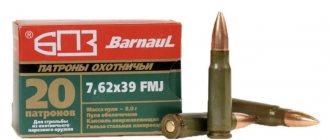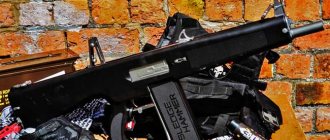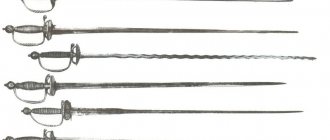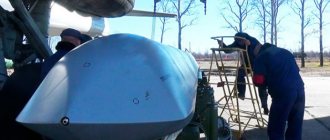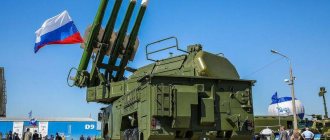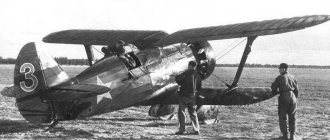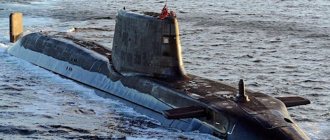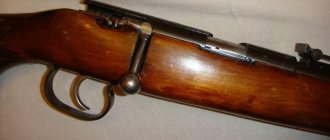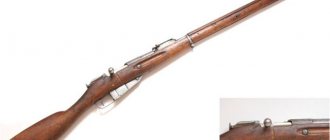Modern reconstruction of the appearance of the winged hussars Until the middle of the last century, cavalry was considered one of the main branches of the ground forces. Over the millennia of its existence, it has undergone many changes, but perhaps the most unusual of its countless varieties were the so-called winged hussars - a very unique army created in the Polish-Lithuanian Commonwealth in the second half of the 16th century and which existed until 1775. Many times these formidable horsemen delivered decisive blows, thanks to which both individual battles and entire wars in which Poland or the Grand Duchy of Lithuania took part were won.
The history of hussaria
The question of the origin of the word “hussar” still causes controversy among linguists and historians. Some of them believe that the name came from Byzantium, where its original variant, chosariori (usually pronounced "khonsary"), denoted a mercenary cavalryman from the Balkan countries, primarily Serbia. Over time, the Serbs themselves began to call the robbers operating on the highway “hussars.”
A more popular version points to the Hungarian origin of the term - according to this point of view, “hussar” is a fusion of the words husz and ar. The first of them means “20”, and the second “payment”. The fact is that in 1458, from every twenty households, one soldier was taken into the mounted Hungarian militia.
One way or another, the first hussars to serve the Polish kings were usually Serbs, not Hungarians. These were quite noble people, each of whom brought with him a whole group of armed assistants.
Polish hussar of the mid-16th century. A helmet has already appeared on the head, but there is no armor yet - a shield is used instead
Regular formations of hussars (companies) appeared in the Polish army in 1501. It should be noted that initially they were considered light cavalry - they used medium-sized war horses and had no armor. In a word, these were not yet those winged hussars who, a hundred years later, earned the reputation of the best European cavalry.
One of the first “great” battles in which the hussars took part on the side of the Kingdom of Poland was the Battle of Orsha, which took place in 1514. You can see them on a canvas painted by an unknown artist and capturing one of the decisive moments of the battle. If you believe this picture, the “early” hussars covered themselves on the battlefield with wooden shields and attacked with spears. Later, the shields disappeared, but the tactics of ramming with pikes were noticeably improved.
Apparently, over the next decades, the Polish hussars gradually became “heavier”, acquiring more and more advanced plate armor, which provided protection not only from edged weapons, but also from pistol shots. A decisive contribution to the development and establishment of this type of cavalry was made by Stefan Batory, who ascended the Polish throne in December 1575. It was he who insisted that each hussar be dressed in strong iron armor and a cone helmet, and also have reliable hand protection - from chain mail sleeves or plate armor.
The increasing weight of protective equipment led to the need to use taller and larger horses. Thus, light cavalry turned into heavy cavalry. Of course, such a transformation, which required enormous costs, could not be carried out at once.
One of the images of Stefan Batory - the creator of the Polish-Lithuanian hussar
Therefore, completely homogeneous cavalry units were created only in 1598 - we can say that it was then that the very winged hussars of the Polish-Lithuanian Commonwealth that went down in history appeared.
Scaly - caracene armor
Since the 1650s, scale armor has also appeared among hussar armor. Its appearance is associated with the theory that the Polish gentry and magnates descended from the ancient Sarmatians. And the scale armor was supposed to be, as it were, a reconstruction of the Sarmatian cataphracts. This theory was supported by the Crown Hetman and King of Poland, John III Sobieski. What’s interesting is that in historical portraits he was depicted in ordinary hussar armor, and in a scaly breastplate there are also portraits of him made “to resemble antiquity.”
However, you should not think that the selection of scale armor was made only to please the fashion for antiquity; such armor has certain advantages. The scales were attached at the top to the base using two rivets, and not using leather laces as in antiquity and the Middle Ages or wire (as was sometimes done in ancient times. This method of attaching scales is called caracene
. In Polish, the words Karacena and Zbroja luskowa are used to denote scale armor. It is worth noting that small scales could be attached to one rivet, and large moths could be fixed in the center with another third rivet.
None of the surviving caracene armor has wings.
They even tried to make the helmets scaly. To do this, the upper part of the helmet's crown was made of a thin layer of steel, and scales were riveted on top. Or they made a thick leather base for the helmet and then attached scales to it.
And another unique detail found on caracene armor is the tubular (and scaly) bracers, which have an unstitched scaly gauntlet that simply hangs over the hand.
| Scaled hussar armor. Museum of the Polish Army. | Scaled hussar armor. Museum of the Polish Army. | Helmet, hand protection and necklace that belonged to the Lithuanian prince Dominik Aleksanrovich, early. 18th century, combined with a scale cuirass. Museum of the Polish Army. |
| Karatsen Hetman Stanislav Yablonovsky ca. 1680 National Museum in Krakow. | Full caracene armor of the Unishovsky family. Royal Castle Wawel | |
| Bracers from caracene armor. Length 51 cm. 63 auction hermann historica | A complete set of caracene armor from the Kremlin Armory | |
Features of winged cavalry
Despite the fact that the hussar arose after the end of the historical Middle Ages, its formation was carried out in accordance with ancient feudal principles. The basis of the army were the so-called “comrades” - nobles, who brought with them small detachments called “posts” and consisting of two to four people, who were called “paholiks”. Each “comrade” was obliged to provide his “post” with weapons, armor, and most importantly, horses.
If a nobleman brought with him five “paholiks,” he could receive the rank of cornet, and if ten, he could receive the rank of lieutenant. The so-called banner was made up of the “posts” (essentially this was a company). The captain commanded her. To obtain this title, it was necessary not only to have certain skills, but also to pay for weapons and equipment of at least twelve “paholics”. In addition, the captain was obliged to purchase pikes for the entire banner - the main weapon of the winged hussars.
The minimum number of banners was 50 horsemen, but could reach up to two hundred. The larger formation was the “khuf”, approximately corresponding to the western “regiment”, that is, the regiment. In general, the number of winged hussars was not constant. It is believed that this army reached its maximum strength before the Battle of Khotyn (1621), when 8,280 hussars entered the battlefield. It is possible, however, that this is an overestimate.
Hussars-"comrades"
The bulk of the army were Polish nobles, but in some battles on the battlefield the winged hussars of the Grand Duchy of Lithuania prevailed. In terms of their equipment, they were practically in no way inferior to their “colleagues,” although there were still minor external differences. In particular, Lithuanian hussars preferred to install the legendary wings on the saddle rather than behind their backs. In addition, they could be distinguished by the colors of the flags attached to the peaks.
Flood
In 1655, a new attack struck Poland. The Swedes decided to finish off the state, weakened by the Cossack uprising, and started a new war. The army of King Charles X literally swept away the weak resistance of the Poles, capturing most of the Polish-Lithuanian Commonwealth in a few months. The famous Swedish “flood” began.
However, by the end of the year the Swedes' power was shaking. The Poles were not happy with the Protestants' encroachment on the Catholic faith. In addition, the energetic Swedish king Charles X turned out to be no better than the weak-willed Polish Jan Casimir.
Charles X Gustav
This led to the beginning of mass resistance to the Swedes. Jan Casimir, who fled from Poland, returned, gathered a loyal gentry and even occupied Warsaw. However, in July 1656, the Swedish army approached Warsaw. Charles X was going to return the capital and completely defeat the Polish army.
On June 28, the largest battle of this war began.
Technical equipment
One of the main features of the technical equipment of the winged hussars was its prohibitive cost. Not every nobleman had enough money to become a “comrade,” not to mention higher ranks. The loss of one hussar in battle may well be comparable in cost to the destruction of a modern fighter. Thus, the war with the participation of this army turned into a very expensive pleasure, but the costs were justified by frequent victories.
Horses
As Guillaume de Beauplan, a cartographer and engineer from France, writes in his book “Description of Ukraine” published in 1660, the winged hussars acquired for themselves large and strong horses, originally bred in Turkey. The minimum price for such a horse was 200 ducats. According to other sources, the cost of purchasing one horse could reach up to one and a half thousand ducats. In those years, this corresponded to the total cost of twenty-two artillery pieces.
The hussars received a salary from the Polish (or Lithuanian) treasury, but even at the very end of the 17th century it was not even 60 ducats. It is clear that the “comrade” would not have been able to purchase three or four horses for himself and his “paholiki” for this money. They had to rely only on their own condition.
Armor
Helmet of a winged hussar, characteristic of the second half of the 17th century.
At first, the winged hussars did not have any uniform type of protective equipment. Each “comrade” ordered it independently. Only during the reign of King Vladislav IV a generalized type of armor was introduced for elite cavalrymen, which became the most common by the middle of the 17th century. This equipment consisted of the following main elements:
- Steel helmet-bump. It covered the entire head in a circle and partially the face, which was ensured by the presence of a butt plate, “ears”, a nose cap and a visor. During the heyday of the hussars, small metal “wings” appeared on the sides of such helmets;
- Cuirass. It consisted of a breastplate and a backrest (the latter could sometimes be missing). According to some evidence, the steel, the thickness of which reached five millimeters, often withstood musket bullets. There were movable plates at the bottom of the breastplate;
- Shoulders and bracers. Sometimes (apparently due to a lack of money) they were replaced with simple chain mail sleeves;
- Plate gauntlets. Sometimes they were replaced by leather gloves with steel plates sewn on them.
The richest nobles purchased additional protection for their legs and a visor for their helmet. In such cases, the total weight of military armor could reach 15 kilograms or even more. In general, however, one can trace a definite trend towards a decrease in the mass of protective equipment, which became less and less useful in battle against well-trained musketeers.
Weapon
The main type of weapon of the winged hussars was the pike. Its length could range from five to six and a half meters. To reduce the overall weight of this weapon, most of the pike was made hollow, consisting of two halves glued together.
A modern reenactor with a late model hussar pike (had a slightly shorter length). A “classic” weapon hold is demonstrated
Thanks to this, the hussar could hold the pike with one hand. Its solid rear part weighed exactly the same as its much longer front.
The pike was a disposable weapon; it most often broke during an attack. For this reason, the hussars had to carry a supply of five or six peaks with them. They were bought at the expense of the captain, each for 9 ducats.
In addition, the winged hussars carried the following types of bladed weapons:
- Konchar. A piercing weapon up to one and a half meters long. The blade is three- or four-sided. Konchar was intended for finishing off opponents lying on the ground, as well as for “piercing” chain mail. This weapon was most often carried under saddle;
- Sword. A kind of sword with a one-sided sharpening and a straight blade. Such weapons were subsequently characteristic of cuirassiers - they provide the most powerful chopping blow;
- Saber. It was originally “borrowed” from the Hungarians. Then Polish sabers appeared, suitable for both mounted and foot combat. Turkish-style sabers were also used.
In addition, axes and clubs could be used - the latter are quite rare. The most common firearms were pistols. Each “flying” hussar had from two to four, sometimes even six. Nevertheless, clear preference was given to melee weapons. The muskets carried in the convoy were used only in defense, when dismounted hussars defended themselves from the enemy while in a fortified camp.
Hussar armed with a konchar. On top of the armor is animal skin. As a rule, rich nobles wore leopard skin
Wings
The most unusual part of the equipment of the Polish-Lithuanian hussars is undoubtedly the wings. They were made from real bird feathers (usually crane or ostrich) attached to a lightweight wooden frame, which in turn was mounted on a special “attachment point” on the back of the armor. Most often, apparently, there was only one such wing.
It should be noted that the wings were originally attached to the saddle. The Lithuanian hussars retained this simpler “constructive scheme” in their banners. The very idea of wings was not original - the “winged horsemen” were, for example, the Turkish “Delhi”. It is much more difficult to answer the question of why such a decoration was needed - even the authors of Wikipedia did not come to a common opinion.
There are several main versions. According to one of them, the wings prevented the lasso from being thrown over the rider. According to another, the feathers at full gallop allegedly created an unbearable noise for the enemy’s horses. The most plausible is the most trivial explanation - with the help of “wings” the Polish cavalrymen exerted a psychological influence on their enemies. In addition, thanks to such an unusual accessory, in the heat of battle it was always possible to distinguish one’s own soldiers from enemy soldiers.
The most “boring” version, shared by some Polish historians, says that the wings were not actually used in battle. They were worn only during parades or some special occasions.
Hussar with wing attached to saddle
Origin
Although in Poland these divisions were formed during the 16th century, their roots, as researchers believe, go back to an earlier period and to other territories. According to one assumption, the ancestors of the winged hussars were light cavalry units that appeared in the Balkans, which were recruited by the Byzantine Empire in the 10th century.
In subsequent centuries, the lands of the Byzantine Empire, including the Balkans, were gradually conquered by the Ottoman Turks. According to one version, it was after the Ottoman Empire's triumph at the Battle of Kosovo in 1389 that Serbian knights (reportedly known as hussars) migrated to Hungary and Poland. Since these states were also in conflict with the Turks, the remaining Serbian knights saw this as an opportunity to take revenge on the Turks.
The subject of appeals to the prosecutor's office are violations of rights by employers
I pamper my children with a roll train with Nutella every New Year: beautiful and tasty
By helping to restore forests, Russians can receive a bonus
Battle tactics of the winged hussars
The main method by which the Hussars' most famous victories were won was a direct ramming attack using long pikes. Such tactics may seem primitive today, but they required completely coordinated action, strict discipline and ideal cavalry skills from the winged hussars.
To carry out the attack, the hussars lined up at a distance of about 375 meters from the enemy in three even ranks. The front was formed from “comrades” who were better armed than the rest. The movement towards the enemy was initially carried out at a step, with complete preservation of formation. After covering approximately half the distance, the horses began to trot, and at a distance of 50 to 30 meters to the enemy, they began to gallop. The last meters of the horse walked along the quarry, at maximum speed.
While maintaining alignment, a powerful blow was ensured, capable of overturning both the enemy's horse and infantry formations. For a long time, no one was able to find a reliable way to protect against such an attack. Knights used similar tactics long before the hussars, but their weapons and armor were much heavier, which reduced the speed of movement not only on the battlefield, but also on the march.
Formation before delivering a frontal ramming attack on the enemy formation
Of course, the significance of a ramming strike should not be exaggerated. As a rule, it was applied either at the very beginning of the battle or at its critical moment. To save their pikes, the winged hussars sometimes acted somewhat differently, attacking the enemy with konchars. They used such tactics, in particular, during the Battle of Klushin, when 6,800 Poles defeated a Russian army of 35 thousand people. Then the hussars attacked repeatedly, and only at the very end they used a ramming attack.
Battle of Wrath
Among the first towns captured by the Swedes in 1626 was Wrath. It covered the route to Danzig, an important port on the Baltic. When Gustav Adolf's army left to take Danzig, the Poles concentrated their forces and began the siege of the Gniew Fortress. The Swedish king saw this as a threat to the communications of his army and, with an infantry detachment of approximately ten thousand people, set out to release Wrath. The Polish troops under the command of Sigismund III had about 15 thousand infantry and seven thousand cavalry, most of which were lightly armed horsemen.
Reconstruction of the Battle of Wrath
The battle began on September 29 and lasted three days. At the beginning of the battle, the Poles came close to the fortified camp of the Swedish troops. The first skirmishes showed that due to their numerical superiority, the Poles had hope of success. Then Sigismund decided to use his main trump card - the hussar banners. The hussars were ordered to attack the Swedish infantry.
The indecisiveness of the Swedes, who were “afraid” to go beyond the fortification lines, turned out to be a well-thought-out plan.
As soon as the Polish horsemen tried to disperse the infantry and attack the lines of riflemen hiding behind stakes and ditches, it turned out that this was impossible.
Reconstruction of the Battle of Wrath
The Poles, confident of victory, wilted. On the last day of the battle, the Hussars again tried to attack the Swedes, who had fortified themselves on the hills near Gronov, but came under heavy infantry and artillery fire, suffered heavy losses and retreated.
This battle was the first major defeat for the Polish Hussars - a lesson from the well-trained Swedish infantry, which used more modern tactics.
The decline of the era of the winged hussars
Until the very end of the 17th century, the winged hussars remained the main striking force of the Polish-Lithuanian Commonwealth. However, their number gradually decreased, while the number of light cavalry grew steadily. The main reason for this was the strengthening of artillery and the emergence of increasingly numerous detachments of well-trained infantry.
The effectiveness of a ramming attack with spears quickly fell, since coordinated volley fire from muskets made it possible to stop any cavalry - if not the riders themselves, then their horses were destroyed. The fact that the winged hussars dominated the battlefields of Eastern Europe for so long was explained only by the fact that their main enemy most often also became cavalry, but much weaker. In clashes with the Swedish infantry, the “comrades” had a much more difficult time.
Polish lancers. Partially inherited tactics from the winged hussars, but became a much more flexible and maneuverable type of cavalry
For example, during the Northern War, the recently invincible winged hussars achieved nothing; their attacks were invariably broken by the musket fire of the soldiers of Charles XII. However, the crisis arose much earlier - already the Cossacks of Bogdan Khmelnitsky quite often managed to defeat the “angels of death”, using hastily constructed fortifications and relying on accurate shooting.
It is not surprising that in the 18th century the winged hussars turned into a ceremonial army - very beautiful, but completely useless. In 1775, the Diet finally decided to disband all hussar banners, making them a part of history. From now on, the lancers became the main type of Polish cavalry.
Battle of the Yellow Waters
The ten thousandth Polish army moved towards the Sich. Potocki planned to strike directly at the center of the uprising and immediately defeat the rebels. Khmelnitsky brought his troops out to meet the Poles. He approached the place where the Yellow Waters river flows into the Dnieper and set up a fortified camp there, in which there were six thousand Cossacks and about three thousand Crimean Tatars. On May 3rd, a detachment of five thousand registered troops went over to the side of the rebels.
On the same day, Pototsky’s detachment walking across the steppe came across Khmelnitsky’s camp. The Poles also built fortifications, but they were surrounded by Cossacks and Tatars. The battle could not be avoided.
On May 5th the battle began. Polish troops entered the field and attacked the Cossack fortifications. The assault was unsuccessful, and the royal troops retreated.
The next day, the Cossacks attacked the Polish camp. Although the besieged managed to repulse the attack, the position of the Poles became hopeless. Potocki decided to give up.
Khmelnitsky promised the Poles not to attack, he only demanded that they surrender the guns. Pototsky agreed, but during his retreat he was attacked by the Crimean Tatars, who did not recognize the armistice agreements and considered the Poles to be legitimate prey. The royal troops, deprived of cannons, were defeated and destroyed.
The hussar detachments in this battle did not show outstanding fighting qualities.

